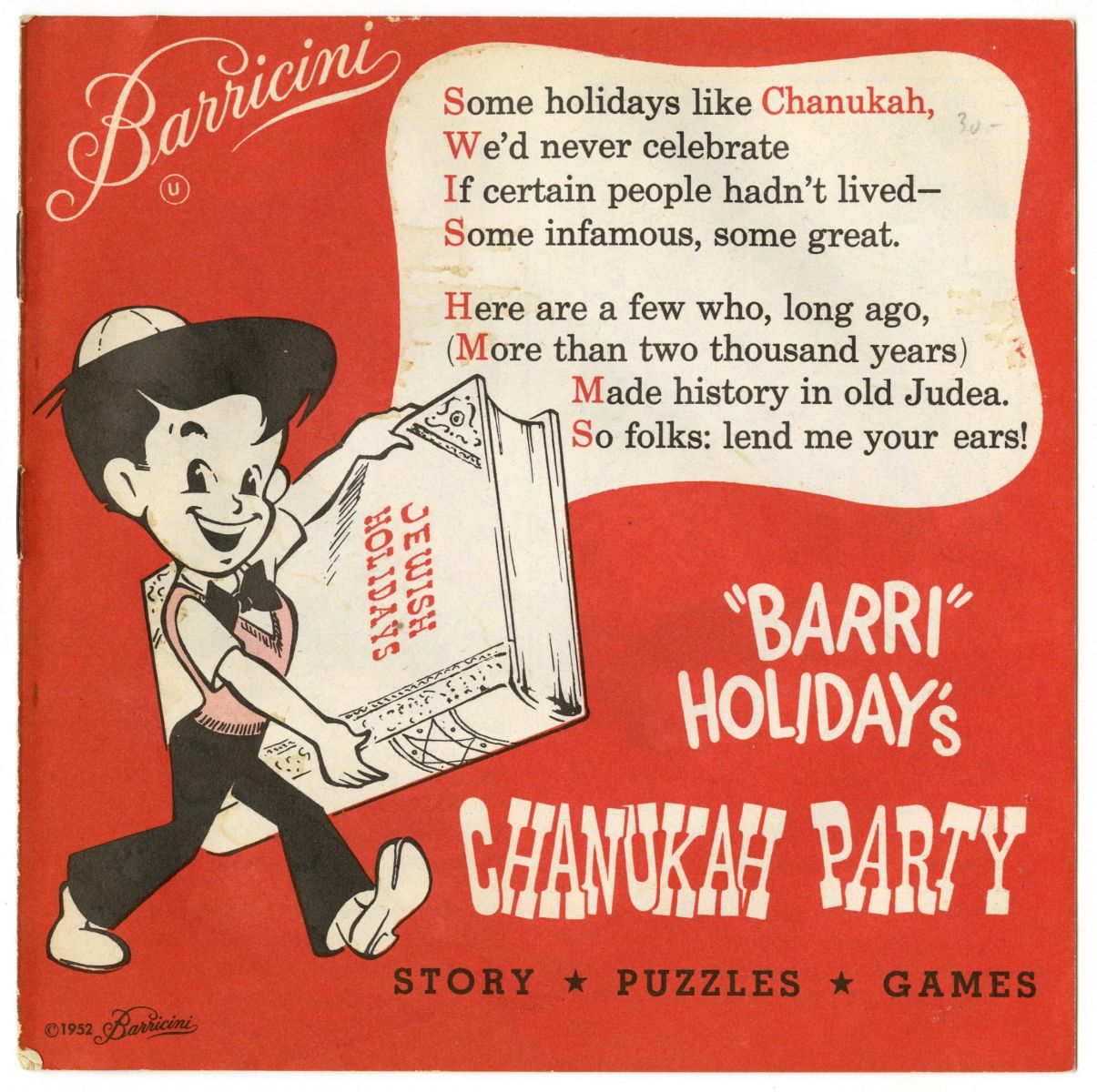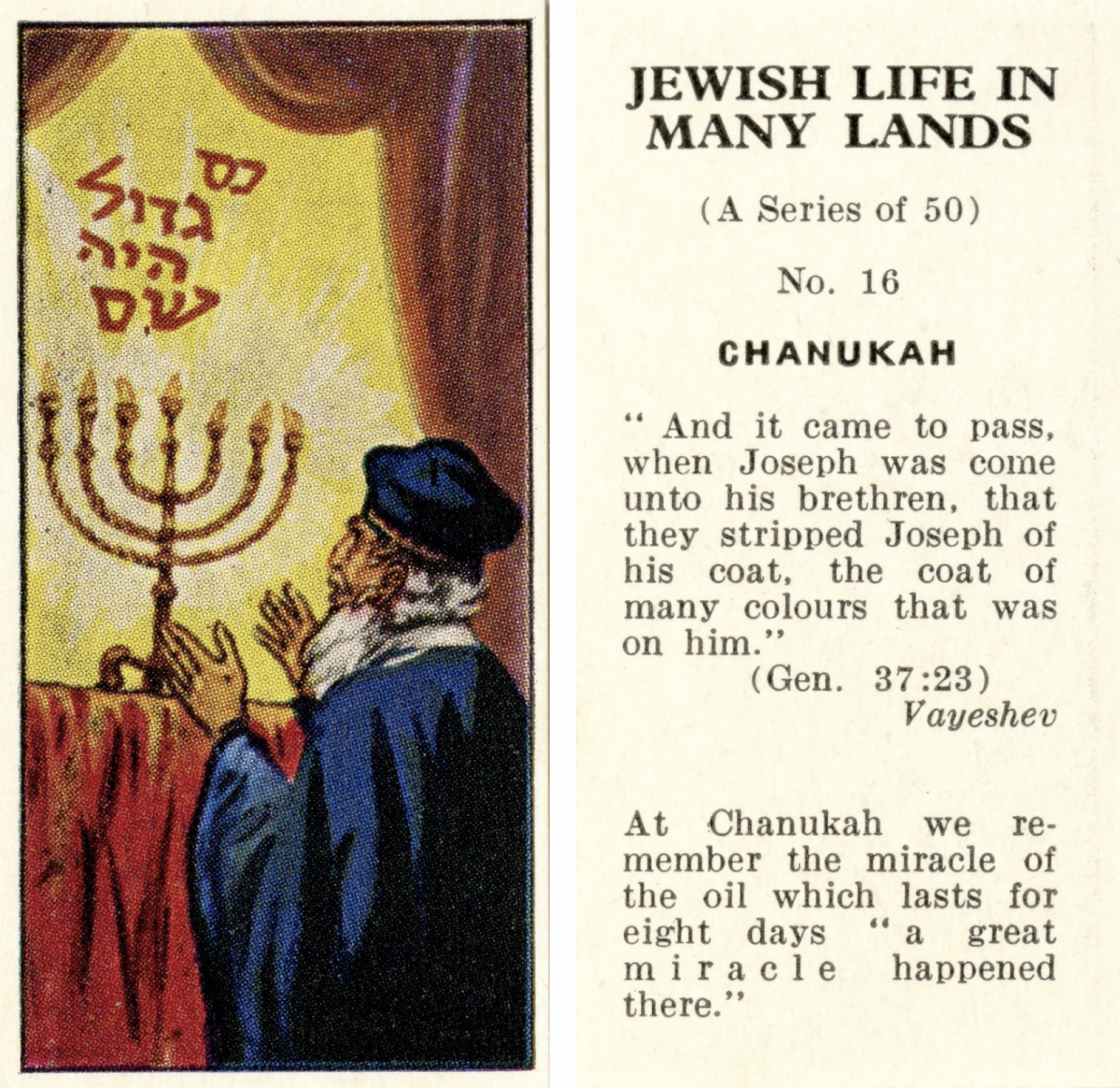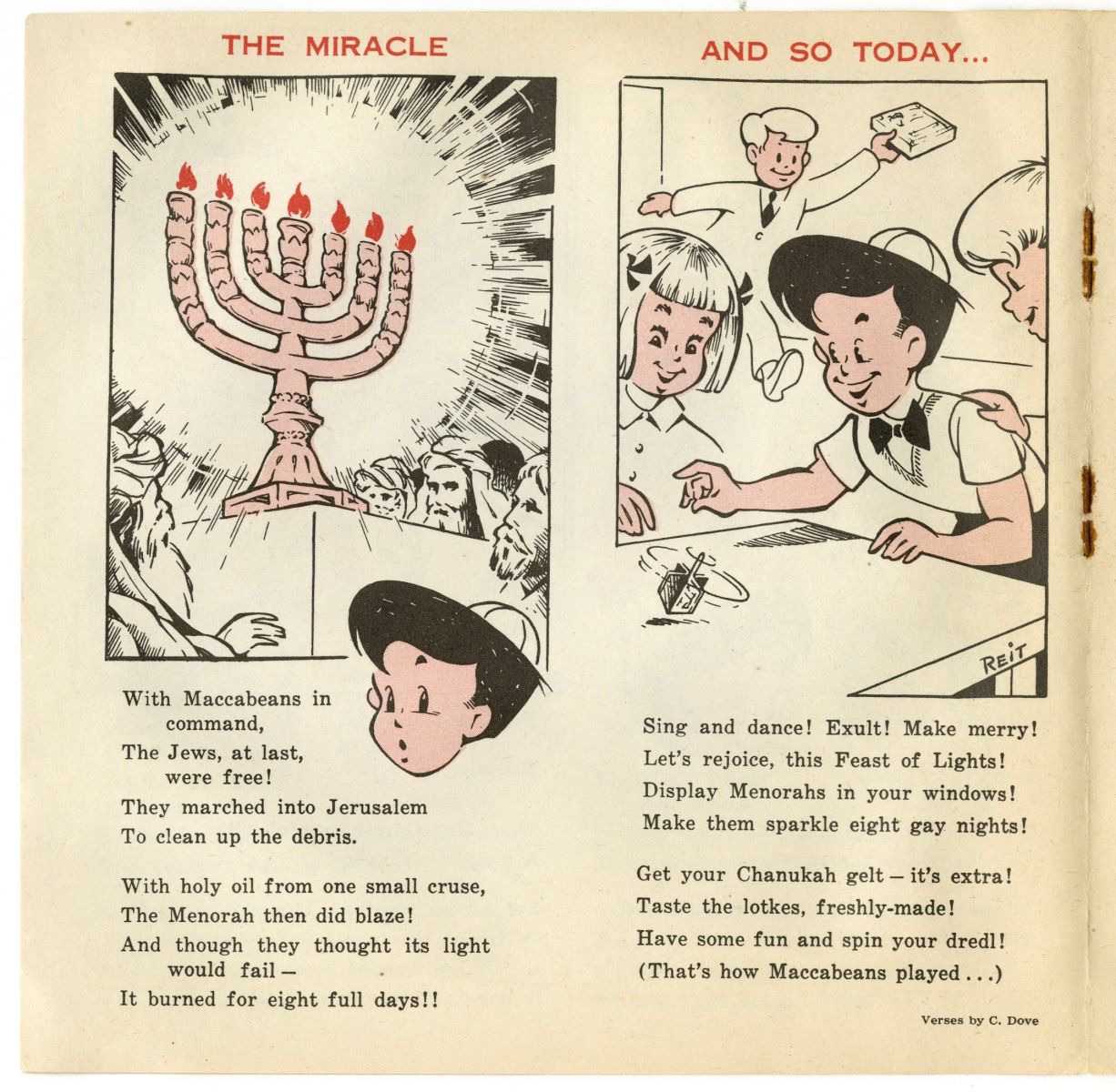Shayna Gutcho, William & Mary Libraries Mosaic Fellow, explains the history of Hanukkah, which begins this year on the evening of December 22. Read on to learn more about the traditions of this Jewish holiday through the resources available in the Special Collections Research Center.
 Cover of "Barri" Holiday's Chanukah Party, a children's puzzle book published in 1952 by Barricini, a kosher chocolate manufacturer
Cover of "Barri" Holiday's Chanukah Party, a children's puzzle book published in 1952 by Barricini, a kosher chocolate manufacturerWith final exams almost over, the winter holiday season is in full swing. Many people across America are busy cutting down Christmas trees, filling stockings, building gingerbread houses, and generally decking the halls. However, not everyone in the United States partakes in Christmas activities. With 2.2% of the American population identifying as Jewish,1 there are also many candles lighting up for the festival of lights, formally known as Hanukkah.
But what exactly is Hanukkah?
Hanukkah, which translates to “dedication,” is the celebration of a win against an oppressor and the miracle of light.
The story of Hanukkah begins in 168 BCE when Judea (present-day Israel/Palestine) was controlled by the King of Syria, Antiochus IV.2 As king of the Seleucid Empire, Antiochus IV made Judaism illegal, destroyed the Second Temple—the holiest site for Jewish people in Jerusalem—and attempted to force the Jewish people to pray to the Greek gods.
The Maccabees, a group of Jewish rebel warriors under the leadership of Judah Maccabee, took control of Judea, causing the Syrians to flee Jerusalem. After winning back Jerusalem, Judah lit a menorah, a seven-branched candelabra, as part of a healing ceremony for the Second Temple.3
The miracle of the story? The oil in the menorah, only enough to light the candelabra for one night, lasted for eight nights! Here, the story of the Maccabees’ victory becomes the story of the miracle of light—and together, the holiday we know today as Hanukkah.
 Obverse and reverse of a "Jewish Life in Many Lands" trading card that depicts the miracle of Hanukkah. The Hebrew script reads, “ness gadol haya sham,” which translates to “A great miracle happened there."
Obverse and reverse of a "Jewish Life in Many Lands" trading card that depicts the miracle of Hanukkah. The Hebrew script reads, “ness gadol haya sham,” which translates to “A great miracle happened there."This year, Hanukkah begins on the evening of December 22 and lasts through the evening of December 30. Unlike Christmas, the dates of Hanukkah change every year according to the lunar-based Jewish calendar. Festivities for Hanukkah include eating fried food, like latkes, playing the dreidel, and lighting the Hanukkiah for the eight nights of the holiday. A Hanukkiah is a nine-branched candelabra that takes inspiration from the story of the miracle of light. On each night of Hanukkah, a new branch is lit. The ninth branch, the shamash, holds a candle used to light the other eight candles.
If you are interested in learning more about Jewish holidays and Judaism, the “Jewish Life in Many Lands” trading cards from the SCRC’s Racial and Ethnic Ephemera Collection (Mss. 1.05) highlight the Jewish diaspora across the United States, Europe, and Israel. The "Barri" Holiday's Chanukah Party book (BM695 .H3 B37 1952) from 1952 likewise depicts the story of Hanukkah through illustrations, games, and puzzles. This children’s booklet was published by Barricini, a kosher chocolate brand based in New York.
For a more local flavor, check out the Beatrice Legum Scrapbook (SC 01580), which highlights Hanukkah festivities at Williamsburg’s Temple Beth El in the 1960s, as well as the Temple Beth El Scrapbooks (MS 00201).
 Obverse and reverse of a "Jewish Life in Many Lands" trading card illustrating a seven-branched menorah in Rome
Obverse and reverse of a "Jewish Life in Many Lands" trading card illustrating a seven-branched menorah in Rome
 A page from the Beatrice Legum Scrapbook, which compiles photographs, newspaper clippings, programs, and hand-drawn illustrations to tell the story of the formation of Temple Beth El and its early involvement in the Williamsburg community in the 1960s
A page from the Beatrice Legum Scrapbook, which compiles photographs, newspaper clippings, programs, and hand-drawn illustrations to tell the story of the formation of Temple Beth El and its early involvement in the Williamsburg community in the 1960s
 Hanukkah newspaper clippings featured in the Beatrice Legum Scrapbook
Hanukkah newspaper clippings featured in the Beatrice Legum Scrapbook
 Excerpt of the Hanukkah story as it is told in "Barri" Holiday's Chanukah Party (1952)
Excerpt of the Hanukkah story as it is told in "Barri" Holiday's Chanukah Party (1952)